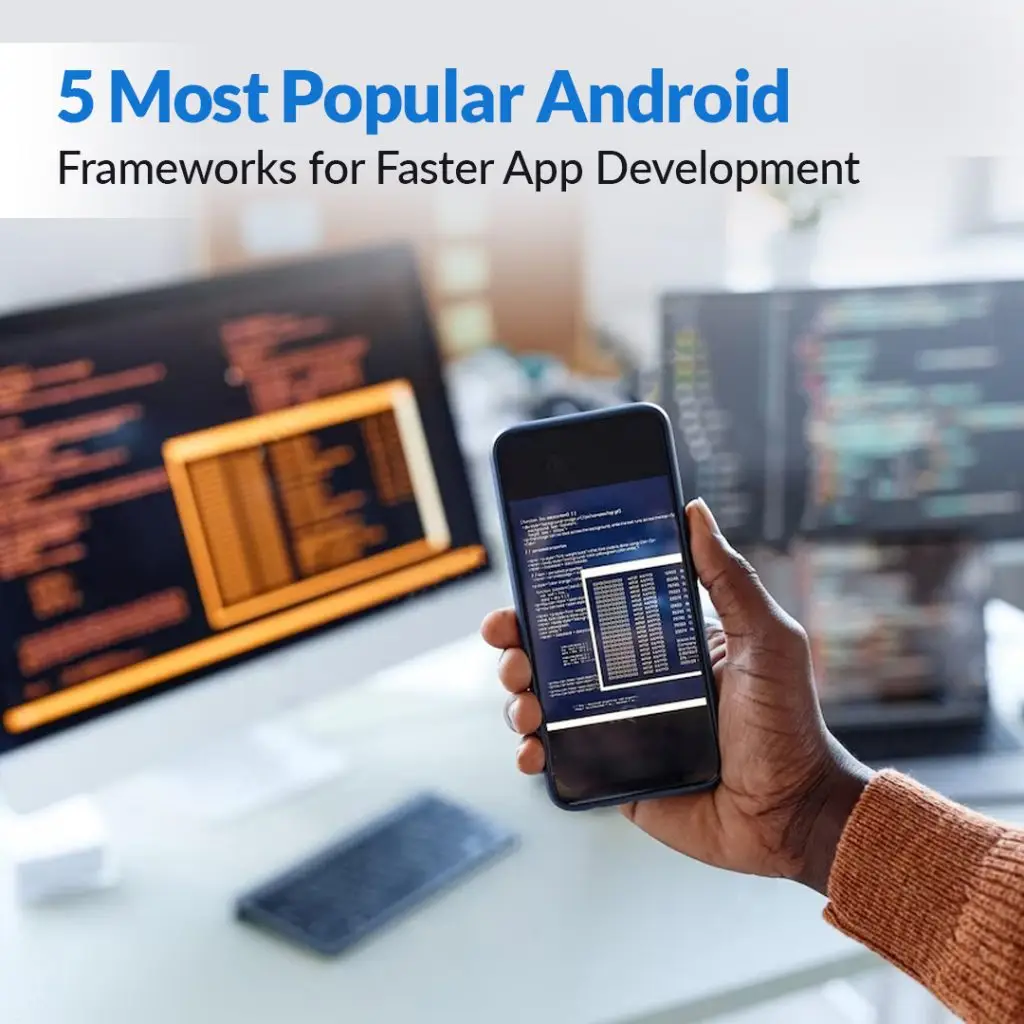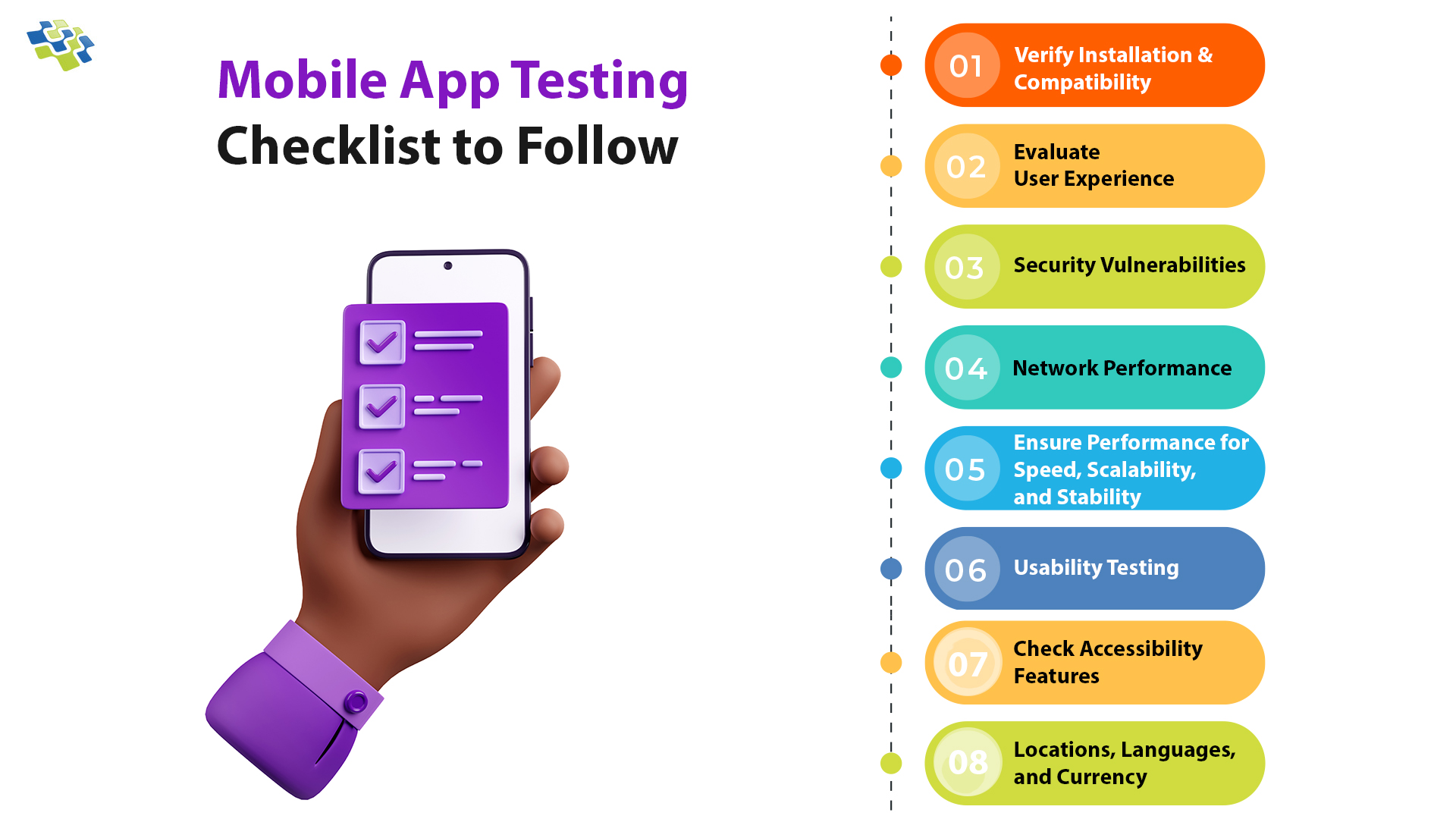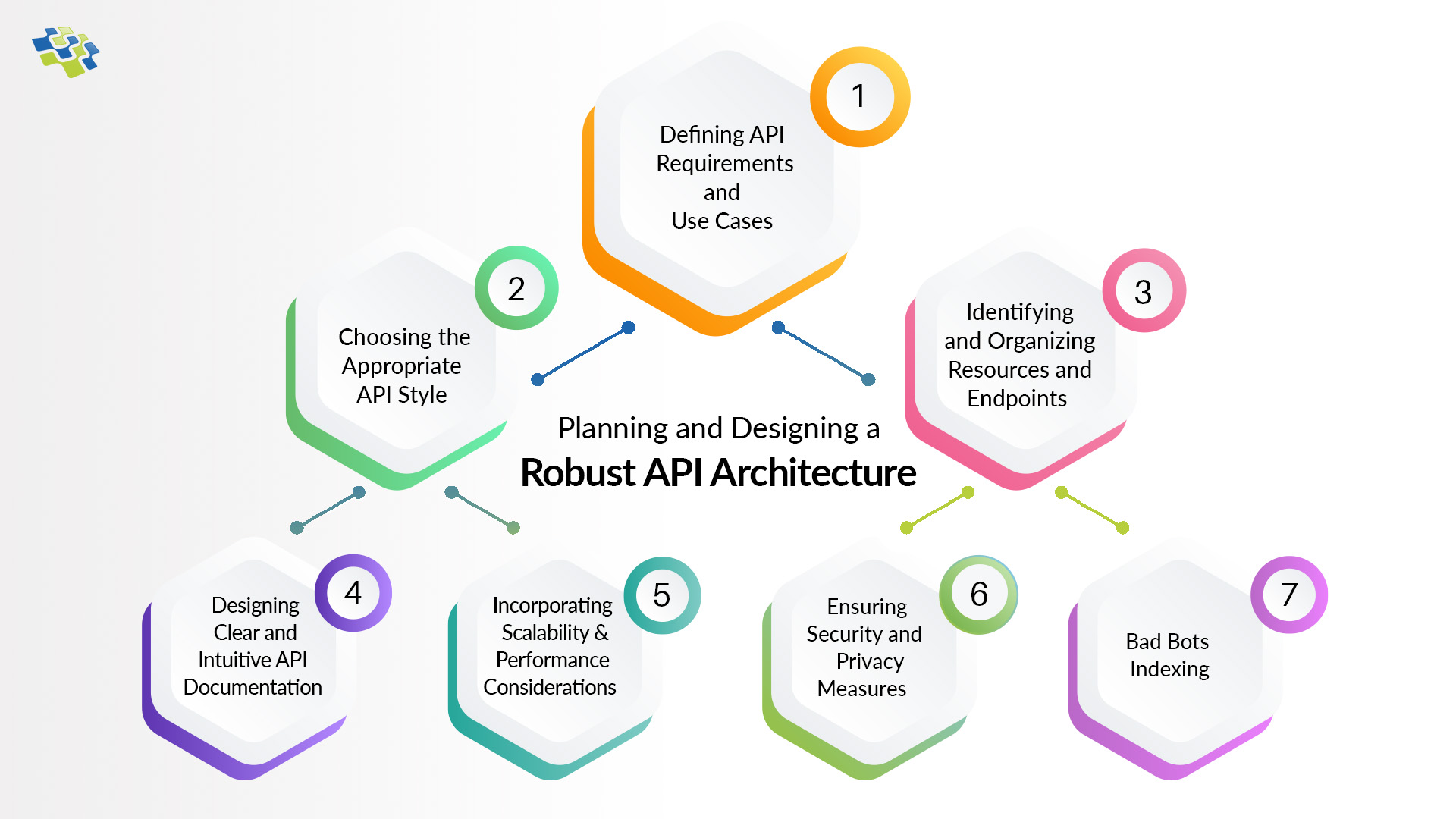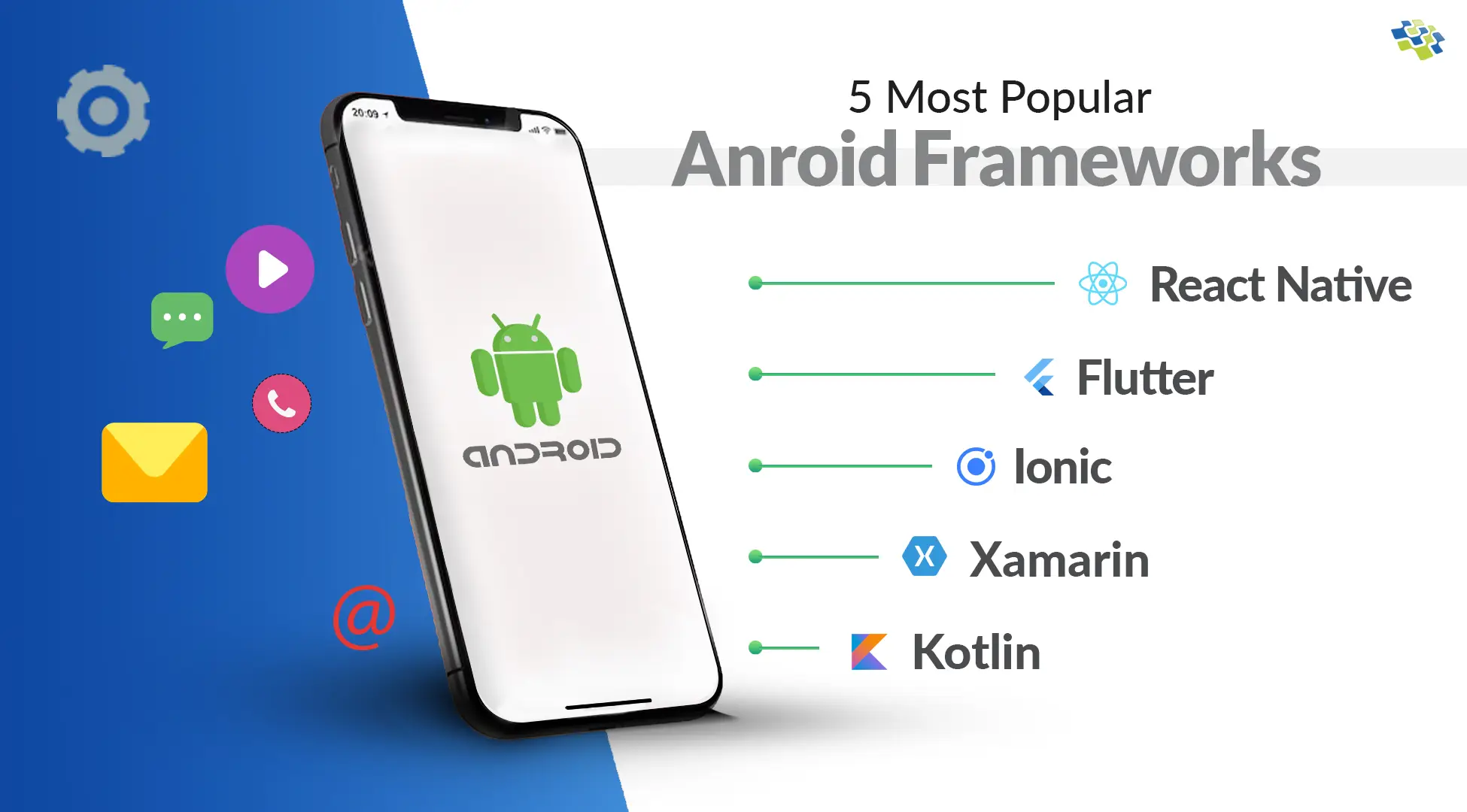5 Most Popular Android Frameworks for Faster App Development
In this guide, we will delve into the top 5 widely used tools for developing Android frameworks. Understanding the capabilities of these mobile app android frameworks will help you identify the most suitable options for your custom app development needs, ensuring successful and efficient project outcomes.

Fuel Your App’s Future: Enhance Business Growth with Agile Android Development!

“By 2032, the mobile app store market is estimated to soar to $1027.21 billion from $165.9 billion in 2022. Android, the world’s most popular operating system, boasts over 2.5 billion active users across 190 countries.”– Globalnewswire
Overview of an App Framework
An essential component in the world of Android app development is the Android application framework, a software toolkit that empowers developers to create robust and user-friendly mobile applications. Serving as the backbone of an app, a framework provides the fundamental structure upon which visuals, animations, unique features, and functionality are built. Its primary purpose is to streamline the development process, making it easier to manage, edit, and address issues in the future. Android app development frameworks share certain characteristics, yet each possesses distinctive qualities that cater to specific project requirements. Determining the ideal framework for a particular Android app development can be challenging due to the diverse intricacies, advantages, and drawbacks associated with each option. Ultimately, the choice of an application framework should be based on the specific needs of the mobile project at hand. Factors such as project complexity, target audience, development team expertise, and desired functionalities play a crucial role in making an informed decision. Careful consideration of these aspects will ensure that the chosen framework aligns perfectly with the project’s goals and leads to a successful and well-crafted Android application.
SDK vs Frameworks
It’s crucial to differentiate between frameworks and software development kits (SDKs), as they are often bundled together. An SDK includes various tools, frameworks, and libraries that facilitate app development for a specific platform. While frameworks provide the essential structure, SDKs offer a comprehensive set of resources to build and deploy applications efficiently.
5 Most Popular Android Frameworks
Discover the pinnacle of Android app development frameworks, ensuring optimal user experiences for your clients. Explore the finest tools to create exceptional applications and captivate your audience with cutting-edge technology.
 1. Flutter Framework
1. Flutter Framework
In 2017, Google launched the open-source Flutter UI framework, revolutionizing app development with its cross-platform capabilities, and eliminating the need for separate codebases on iOS and Android. Today, Flutter is widely embraced for its exceptional productivity and efficiency, enabling developers to craft stunning user interfaces using a rich array of customizable widgets. This versatility empowers the creation of visually captivating front ends that evoke a native-like feeling for users. With Flutter’s seamless integration and rapid development cycles, it has become a popular choice, providing a delightful user experience while saving time and resources for businesses and developers alike.
Companies that Use the Flutter Framework: Google, eBay, Alibaba, and Tencent
Features of Flutter:
- With Flutter’s hot reload functionality, real-time code changes may be seen in the app right away.
- Flutter’s graphics engine renders visuals directly, resulting in fluid animations and responsive user interfaces.
- Widgets are reusable components that can be easily combined, customized, and nested to construct sophisticated user interfaces, and they make up Flutter’s UI.
2. React Native Framework
React Native, the open-source UI development framework developed by Meta (formerly Facebook), seamlessly blends the power of React, a leading JavaScript toolkit for crafting user interfaces, with the best attributes of native app development. Offering quick and reliable workflows, React Native’s libraries cater to both Android and iOS app development, allowing developers to create high-performance applications with ease. By utilizing a single codebase, developers can efficiently build cross-platform apps that deliver a native-like experience to users. This framework has garnered immense popularity for its efficiency, extensive community support, and continuous improvements, making it a top choice for developers seeking a streamlined approach to fast mobile app development.
Companies that Use the React Native Framework: Instagram, Uber, Facebook, Tesla, and Walmart
Features of React Native:
- A wide range of pre-built components is available in React Native, which may be easily integrated and customized to produce complex user interfaces.
- Developers can use native modules and APIs with React Native to seamlessly integrate with device features and capabilities.
- Over-the-air updates are possible with React Native, allowing for app modifications without forcing users to download brand-new versions from app stores.
3. Ionic Framework
Ionic, an open-source framework, combines Angular and Apache Cordova to empower developers in crafting robust and feature-rich native iOS and Android applications with seamless performance. Embracing Ionic offers the advantage of incorporating a wide array of UI elements, including filters, forms, views, action sheets, and navigation menus, enhancing app design and user experience. As a comprehensive framework, Ionic facilitates the creation of cross-platform and hybrid mobile apps, along with Progressive Web Apps, streamlining the development process and enabling code reuse. With its versatility and extensive library of pre-built components, Ionic has emerged as a top choice for developers seeking efficient and scalable solutions for building cutting-edge mobile applications across multiple platforms.
Companies that Use the Ionic Framework: Just Watch, Sworkit, and Pacifica
Features of Ionic:
- The Apache Cordova plugins that Ionic effortlessly integrates give users access to native device functions like the camera, geolocation, and more.
- Ionic makes it easier to create PWAs, which enables app distribution on the web and expands the app’s audience and usability.
- Ionic’s live reload functionality enhances the development workflow by enabling real-time updates to be displayed right away as changes are made.
4. Xamarin Framework
With an impressive track record of over 13,000 apps and 2 billion downloads, Xamarin has emerged as a highly sought-after framework for cross-platform application development. Leveraging the power of C#, it enables seamless functionality across Windows, iOS, and Android platforms, with approximately 90% code-sharing efficiency. Offering a wide array of class libraries and compatibility with modern IDEs like VSCode, Xamarin streamlines development, reducing time and costs. Developers can harness the full potential of native apps while benefiting from shared codebases, making it an attractive option for businesses seeking efficient and cost-effective solutions for building high-quality applications across multiple platforms.
Companies that Use the Xamarin Framework: Captio, Storyo, and The World Bank
Features of Xamarin:
- Developers may design reusable code that can run on various platforms thanks to characteristics that allow for 90% code sharing, maximizing productivity and lowering maintenance costs.
- With the help of Xamarin, developers may benefit from C#’s advantages, such as type safety, simple debugging, and robustness. C# is a powerful and widely used language.
- Xamarin.Forms provide high-level UI abstraction, which simplifies UI development by enabling developers to construct UI elements once and use them across multiple platforms.
5. Kotlin Framework
Kotlin, a flexible and powerful programming language, offers a seamless path to Android app development. With its concise and expressive syntax, Kotlin code becomes more readable and less prone to errors. Ensuring null safety, Kotlin provides a clear and secure approach, effectively preventing crashes caused by NullPointerException. By blending object-oriented and functional programming paradigms, Kotlin offers an interoperable and modern language for developers. Notably, Java programmers find it easy to adopt Kotlin due to its simplicity and familiarity. As a result, Kotlin stands as an efficient and user-friendly language choice for building Android applications, promoting faster development and increased code reliability.
Companies that Use the Kotlin Framework: Tinder, Trello, Slack, and Pinterest
Features of Kotlin:
- Kotlin’s clear and expressive syntax allows developers to write code with less boilerplate, which also makes it easier to read and maintain.
- The design of data-centric classes is made easier by Kotlin’s data classes, which automatically produce boilerplate code for model classes.
- The type of system in Kotlin incorporates null safety measures that reduce the likelihood of Null Pointer Exceptions.
Conclusion
Embracing the right Android framework can significantly accelerate app development, enabling businesses to reach their audience faster and with greater efficiency. Each of the five frameworks discussed – Flutter, React Native, Ionic, Xamarin, and Kotlin – offers distinct advantages and empowers developers to create high-quality, feature-rich applications. As technology evolves, these frameworks continue to improve and adapt, providing endless possibilities for app development in the fast-paced digital landscape. Ready to turn your app idea into reality? Partner with NextGen Invent, your trusted app development company. Our team of skilled developers is well-versed in the most popular Android frameworks, ensuring your app is built with cutting-edge technology and a focus on user experience.
Let’s innovate and bring your vision to life. Schedule a meeting today and take the first step toward your app’s success.
Read Related Blogs

A Step-by-Step Guide for Mobile App Development
In today’s world, smartphones have become ubiquitous, transcending geography and industries. It is universally acknowledged that engaging with consumers through mobile devices is the most effective way to capture their attention, generate interest in a brand, and drive sales.

The Ultimate Mobile App Testing Checklist
This comprehensive mobile app testing checklist is designed to offer valuable insights. It caters to the needs of testers, product managers, DevOps professionals, and QA engineers who are dedicated to ensuring an exceptional user experience through mobile applications.

How to Build a Robust API Architecture?
APIs play a crucial role in connecting modern technology with commercial ecosystems. With API architecture, businesses can leverage data monetization, forge valuable partnerships, and unlock new avenues for innovation and expansion.
Stay In the Know
Get Latest updates and industry insights every month.
 1. Flutter Framework
1. Flutter Framework